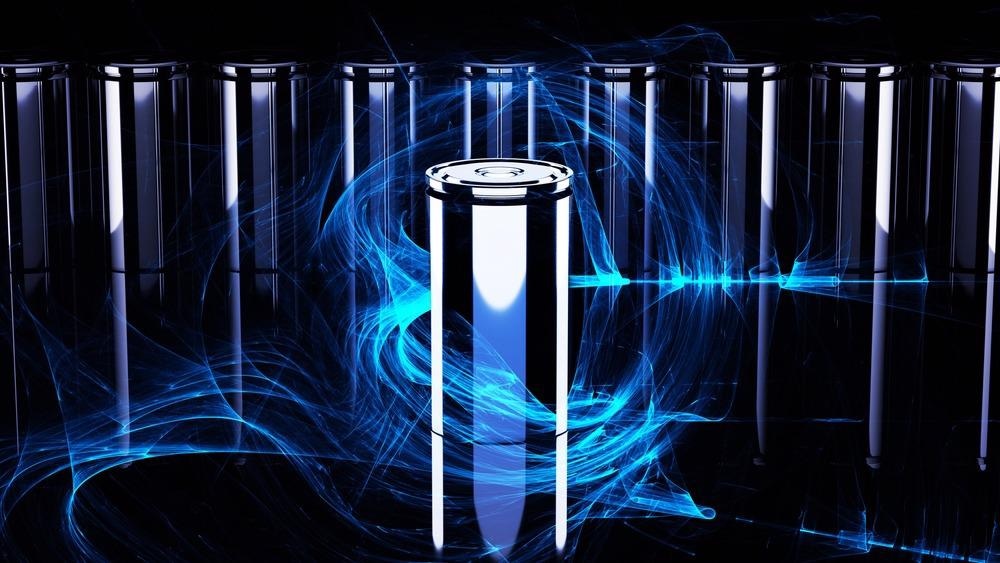Due to its rapid two-dimensional ion diffusion channels, molybdenum disulfide (MoS2) has tremendous promise in hybrid Mg-Li batteries. A new work published in the journal ACS Applied Energy Materials focuses on developing highly distributed MoS2 nanoflowers as cathode materials for Mg-Li batteries with increased capacity and lifespan.

Study: Hydrochloric Acid-Assisted Synthesis of Highly Dispersed MoS2 Nanoflowers as the Cathode Material for Mg-Li Batteries. Image Credit: P5h/Shutterstock.com
Limitations of Lithium and Magnesium-Ion batteries
Energy conservation, both renewable and non-renewable, is vital to solving massive worldwide concerns such as energy consumption, fossil fuel deficiency, and human-caused environmental issues. Rechargeable batteries, such as lithium-ion batteries and magnesium-ion batteries, are critical for the effective management of energy resources because they can store and release electric power without causing any harm to the environment.
Lithium-ion batteries (LIBs) have garnered considerable interest in recent times due to their high gravimetric power density, theoretical potential, and long-term cycling stability. However, due to a scarcity of lithium sources and a flaw in lithium dendrite formation on the surface of the anode, LIBs are not suitable for a wide range of practical applications.
In light of this, magnesium-ion batteries (MIBs) were developed owing to the availability of resources and the anode's dendrite-free development. However, a major challenge to the industrial usage of MIBs is that due to the sluggish diffusion kinetics of these batteries, significant polarization may occur during charge-discharge operations.
Why are Hybrid Mg-Li Batteries (MLIBs) Important?
MLIBs with a hybrid salt electrolyte have been developed to resolve the issues of simple lithium and magnesium-ion batteries. The hybrid battery system consists of magnesium as the anode, Mg2+/Li+ mixed salt as the electrolyte, and interlayer materials as cathodes. This not only fully exploits the benefit of a dendrite-free Mg anode, but also achieves the quick kinetics of Li+ in the cathode material.
Currently, most MLIBs that have been developed are Daniell-type cells, where the absorption of lithium salt in the solution significantly restricts the energy density of MLIBs. If the cathode materials are capable of storing both Li+ and Mg2+, the MLIBs will eliminate the problems of Daniell-type cells while maintaining a high energy density.
Molybdenum Disulfide (MoS2): A Suitable Cathode for MLIBs
Molybdenum disulfide (MoS2), a representative of the traditional transition metallic dichalcogenides, has recently garnered considerable interest as a cathode material for MLIBs. While bulk MoS2 is incompatible with Mg2+ intercalation, dispersed MoS2 is more favorable to Mg2+ diffusion and retention.
Traditionally, various techniques have been employed to synthesize scattered MoS2, including mechanical exfoliation, electrolytic exfoliation, and liquid exfoliation. However, these technologies are often difficult in their synthesis phases or are time and effort-intensive. Thus, developing a simple process for producing highly distributed nano-MoS2 is critical for industrial applications.
Hydrochloric acid Assisted Synthesis of MoS2 Nanoflowers
In this study, MoS2 nanoflowers with varying degrees of dispersion were manufactured using hydrochloric acid to regulate the sulfur ion concentration in the solution. All of the raw materials utilized in the experiment were chemically pure and were used directly.
Key Findings of the Study
MoS2 produced in this study has a distinct morphology with a large BET area and a wide lattice spacing, enabling it to display large capacity, excellent rate efficiency, and stable cycling performance as a cathode material for hybrid MLIBs.
The dispersed architecture and enhanced lattice spacing facilitate complete contact between electrolytes and materials and minimize the ion diffusion route lengths inside the electrode, therefore promoting ion diffusion and improving reaction rates. The distinctive structure of MoS2 enabled the achievement of a high reversible capacity of 192.8 mAh g-1 over 100 cycles.
Future Perspective
In this work, the researchers successfully manufactured highly distributed MoS2 nanoflowers by controlling the number of sulfur ions in the solution using hydrochloric acid. The current study not only offers a viable cathode material for MLIBs but also highlights a method for fabricating highly dispersed MoS2 substances for other industrial uses.
Reference
Xiong, Z. et al. (2022). Hydrochloric Acid-Assisted Synthesis of Highly Dispersed MoS2 Nanoflowers as the Cathode Material for Mg-Li Batteries. ACS Applied Energy Materials. Available at: https://pubs.acs.org/doi/10.1021/acsaem.2c00611
Disclaimer: The views expressed here are those of the author expressed in their private capacity and do not necessarily represent the views of AZoM.com Limited T/A AZoNetwork the owner and operator of this website. This disclaimer forms part of the Terms and conditions of use of this website.